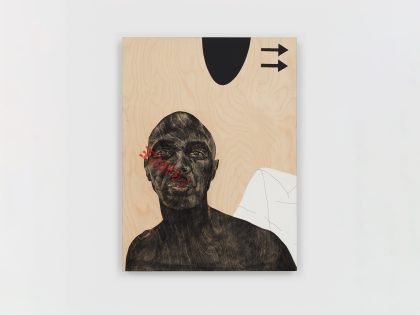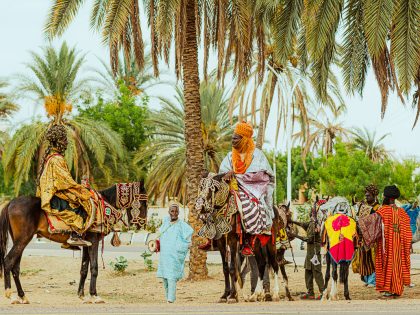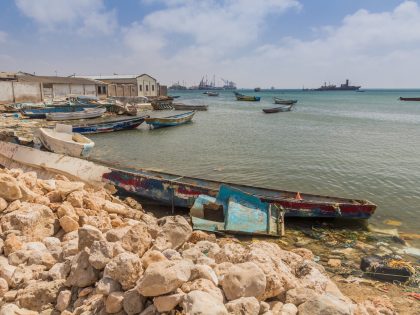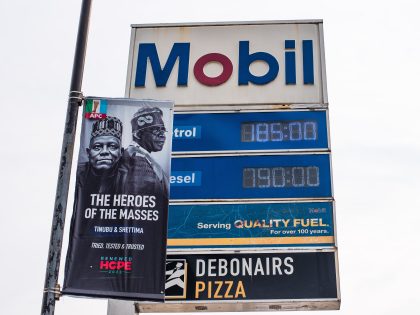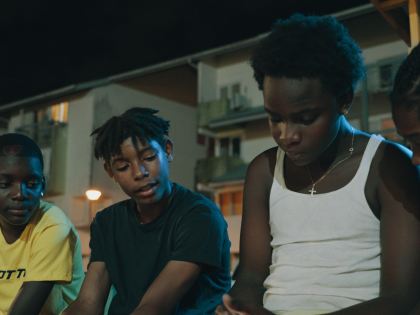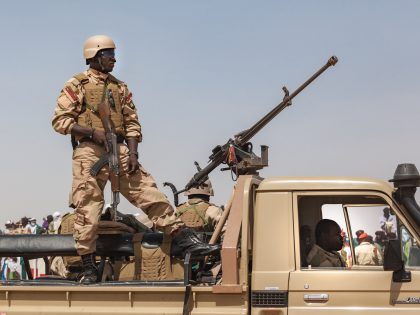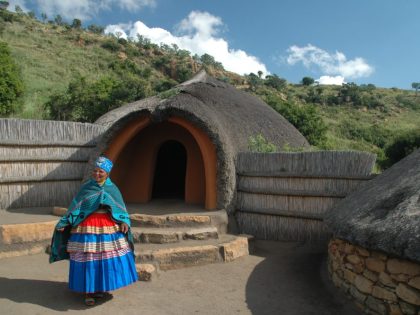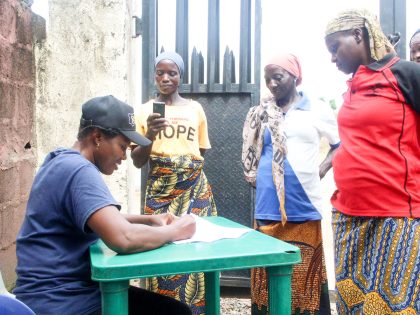The militant philosopher of Third World liberation

Image Credit Leo Zeilig (I B Tauris or HSRC Press - South Africa)
In 1953 Fanon moved to Algeria to work in the small town of Blida, about 50 miles from the capital Algiers. He applied for a position as a psychiatrist, having recently qualified. Fanon did not leave France for Algeria because he predicted the future publishing success of The Wretched of the Earth, or that a war and revolution against France was about to break out. Algeria transformed Fanon. At the large hospital in Blida he experimented with therapies that he had seen at Saint Alban and developed with the Spanish revolutionary psychiatrist François Tosquelles. After 1954 the hospital was quickly drawn into the war.
The Hospital at the Time of the Revolution
The hospital that had been for a brief period a sanctuary for those physically and psychologically injured was sucked into the maelstrom. Members of Fanon’s staff were arrested, some beaten, others had joined in the strike action called by the Front de Libération National; others went to fight in the mountains. As Fanon’s colleague Alice Cherki remembers, ‘the hospital was considered to be a veritable nest of fellaghas. Fanon was certainly a target … a sweep up was being prepared.’ There was no neutrality. A repressive noose was tightening around Blida’s hospital.
Fanon’s working life was also overturned. His was now seeing patients who were suffering from torture, or inflicting it. Despite Fanon’s post-1961 image as an apostle of violence, he treated, with great humanity French-Algerian torturers – some of these stories appear as case notes in the final chapter of his last book. Both torturer and tortured in Fanon’s psychiatric practice were victims of the Algerian war.
One story illustrates the Fanon’s humanity. A patient, a policeman, was referred to Fanon. He complained that he could not sleep at night. Each time he fell asleep he was woken by the sound of screaming. Each scream, he explained to Fanon, he recognised as the screams of a man beaten up, hung from his wrists for two hours, and the final highest pitch was the scream as a person was being electrocuted. Fanon helped to secure the policeman sick leave after which he returned to France. In the middle of one consultation Fanon was called out. Josie, his wife, suggested to the policeman that he wait in their house inside the hospital grounds. Instead the policeman decided to walk in the hospital grounds. A short time later Fanon saw the patient doubled over dripping with sweat. He had passed one of his victims in the hospital. Fanon gave him a sedative and calmed him down. Fanon then went in search of the tortured Algerian. Eventually he was discovered cowering in a toilet, terrified that the police had been called and he would be arrested and tortured again. Finally, Fanon convinced him that he was mistaken and that he had not just seen the policeman.
Such was the work of this apostle of violence. After leaving Algeria in 1957 Fanon and his wife Josie move to Tunisia. Tunis had recently become one of the bases for the FLN (National Liberation Front) outside Algeria as militants and cadres were forced to flee the country with the defeat of the Battle of Algiers. Increasingly Fanon was absorbed in his work for the FLN and focused on building support and practical solidarity for the Algerian cause in sub-Saharan Africa. He also developed lasting links with other militants in national liberation organisations on the continent. Frequently Fanon championed the FLN way of doing things: an insurrection followed quickly by an escalation to the armed struggle. In this respect Fanon shared a naive belief in the ‘armed’ route to liberation with Guevara.
Dangerous Voluntarism
While there is much to distinguish Fanon from Che Guevara; Fanon’s understanding of revolutionary transformation, his sophisticated grasp of national liberation, but in his advocacy of the armed struggle (no matter what), the two men were remarkably and tragically similar. In Guevara’s laughable and tragic – though courageous – attempts to export the Cuban model to the Congo in 1965 and Bolivia in 1967, he made the same mistakes as Fanon. Both men shared a dangerous voluntarism that saw action and armed revolutionary struggle as a simple act of will. Fanon was a far more sophisticated thinker and theorist than Guevara but he shared many of the Argentinians belief in the heroic guerrilla. As Guevara sought a simple exporting of guerrilla war in the mid and late 1960s, so Fanon had earlier.
Yet Fanon would not have subscribed to Guevara’s belief that it was the duty of a revolutionary to make revolution, that became a rallying cry of many ‘true’ revolutionaries in 1960s and 1970s, but he did slip disastrously into a similar voluntarism with his fervour for the Algerian model. Still the differences between the men need to be restated, in case there is any confusion. While Guevara celebrated small bands of guerrilla fights, Fanon saw mass involvement of ordinary people essential for making the revolution and remaking – recerebralising – the people themselves. Revolution as an act of self-emancipation resides deeply in Fanon’s revolutionary thinking, but is not present in any meaningful sense in Guevara’s writing or practice.
As we have seen, Ghana in the late 1950s was a place of exciting meetings and possibilities. Accra was both host to pan-African conferences and a HQ for nationalist leaders and parties. Fanon loved it. He met other men – sadly mostly men – as driven and possessed as himself. Fanon did not like people who held themselves back, went to bed early instead of talking and arguing through the night. Before and after the diagnosis of Leukaemia, Fanon would repeatedly state that he did not like people who limited themselves – in French ‘s’economiser’ – literally ‘economised’ on their output of energy, conserving and limiting their activity and engagement. He criticised Simone de Beauvoir, after he had met her with Jean-Paul Sartre in Rome in July 1961. De Beauvoir was, according to Fanon, ‘one of those people’ who held themselves back. He knew and understood this side to himself, describing such exuberance, his total commitment to life as ‘doing a Fanon.’ In Ghana he met many such ‘Fanon’s’ but none with his penetrating and unyielding vision.
Liberate the north from the south
In late 1960 Fanon received authorisation to carry out a reconnaissance of a possible West African supply route into southern Algeria, but also an entry point for an African Legion to attack the French from the south. ALN troops needed to be supplied with extra forces and armaments. Supplies were cut off by the French but ALN troops fighting the French in the south could, hypothetically, be reached from sub-Saharan Africa. Fanon set out to prove this could be done.
The mission revealed a basic historical and geographical fact about the continent: at no point was the desert an impenetrable divider of the continent separating the civilised north from the barbaric south. The view that sub-Saharan Africa was populated by savages dominated the European thought throughout the 19th and much of the 20th century. In reality there had existed for many millennia a continual flow of goods and people between the Maghreb and sub-Saharan Africa. Gold travelled north, as certain handicrafts, salt and meats travelled south in a vibrant trade that crisscrossed the expanse of desert.
Fanon wanted to find out if a route could be used by the African Legion to replenish combatants in Wilaya V and VI. In October 1960 Fanon set out. He kept a field journal that he intended to use when he returned to write a report for the FLN leadership on the prospects for a Southern Front. What is remarkable about the report – which is found in his posthumous collection of writings Pour la Revolution Africaine – is that although these were rough notes written in the difficult circumstances of an uncomfortable and clandestine trip across 2000 miles, the language was powerful and passages beautiful. It seems Fanon was incapable of writing plain prose. The journal starts with a series of bullet points, ‘To put Africa in motion, to cooperate in its organisation, in its regroupment, behind revolutionary principles. To participate in the ordered movement of a continent – this was really the work I had chosen.’ He then gives a continental survey: Mali was ‘ready for anything’ offering a ‘bridgehead’ to ‘precious perspectives.’ The Congo ‘which constituted the second landing beach for revolutionary ideas’ but is now caught up in an ‘inextricable network of sterile contradictions.’ He then stresses the need, though now delayed, to ‘besiege the colonialist’s citadels known as Angola, Mozambique, Kenya and the Union of South Africa.’
The field journal expresses Fanon’s commitment to African unity distinct from the hollow sloganising from much of the nationalist movement on the continent. Fanon’s Africa was not the continent ‘of the poets, the Africa that is sleeping, but the Africa that stops you sleeping because the people are impatient to be doing something, to speak and to play.’ Fanon states the objectives of his mission – a declaration of determined will, ‘We must immediately take the war to the enemy, leave him no rest, harass him, cut off his breath. Let’s go. Our mission: to open up the Southern Front. To bring in arms and munitions from Bamako. Stir up the population of the Sahara; infiltrate our way into the high plains of Algeria. Having taken Algeria to the four corners of Africa, we have to go back with the whole of Africa to African Algeria, towards the north; towards the continental city of Algiers. That is what I want; great lives … cross the desert. To wear out the desert, to deny it, to bring together Africa and to create the continent … take the absurd … the impossible, rub it up the wrong way and hurl a continent into the assault.
Fanon’s contribution
For Fanon it was not enough to celebrate the achievements of decolonization, it was necessary to educate, to strain at the limits of national freedom and to provoke and generate debate. The All-African Peoples Conference in 1958 in Ghana was the place to do this, and to learn about the movements on the continent. Ghana was both a sub-Saharan headquarters for movements on the continent still reaching towards independence and a laboratory for real-existing nationhood and independence. The country was already a collection of vivid and painful contradictions. Many white people had stayed on to assist the new government. Even the Ghanaian army was run by British officers who were on lease to the new country until its own officers had been trained. At the same time the Nkrumah was an outspoken advocate for pan-Africanism. For a generation of young militants he was a figure to emulate. Fanon would learn much from his temporary posting in Ghana.
Three years later, in 1961, recently diagnosed with leukaemia and understanding severity of the prognosis, with life ebbing from him Fanon dictated his masterwork, The Wretched of the Earth to his wife, friends and secretaries. When he seemed to recover temporarily and find some strength after a new round of treatment he travelled to the Tunisian/Algerian border (Ghardimaou in Tunisia) and spoke to the assembled troops of the Armée de Libération Nationale (ALN). Many were illiterate, readying themselves to fight the French (and enter a free Algeria). He spoke to them from his recently drafted and now most famous chapter in The Wretched of the Earth about the pitfalls of national consciousness. He described how the national bourgeoisie after independence is only too happy to accept crumbs thrown to it from the departing colonial powers. Without social reform, without political and economic transformation, national liberation would be an empty shell. Fanon’s parting gesture in his last public appearance was a warning to militants of the anti-colonial struggle: make this independence for yourselves, ensure that the self-organisation and confidence you have developed in the fight against the French becomes a sustained and continuous programme of revolutionary transformation after the Algerian flag is raised. On the threshold of victory Fanon said be warned of your leaders, ‘No leader, however valuable he may be, can substitute himself for the popular will; and the national government … ought first to give back their dignity to all citizens, fill their minds and feast their eyes with human things, and create a prospect that is human because conscious and sovereign men dwell therein.’ Fanon’s final act was to the revolutionary movement that he devoted the last and most important years of his life, but he was also subversive of that revolution.
After Fanon’s final and exhausting resurrection from his terminal sickness he accepted treatment in the United States and flew there in October 1961 from his exiled Tunisian home. Fanon had stubbornly refuse treatment in the United States, condemning the country for its lynching and discrimination of black people. He crossed the Atlantic for the last time, but to no avail. On 6 December 1961 he died. He was 36 years old.
* Leo Zeilig’s biography of Frantz Fanon, The Militant Philosopher of Third World Liberation, has just been published by I B Tauris.












